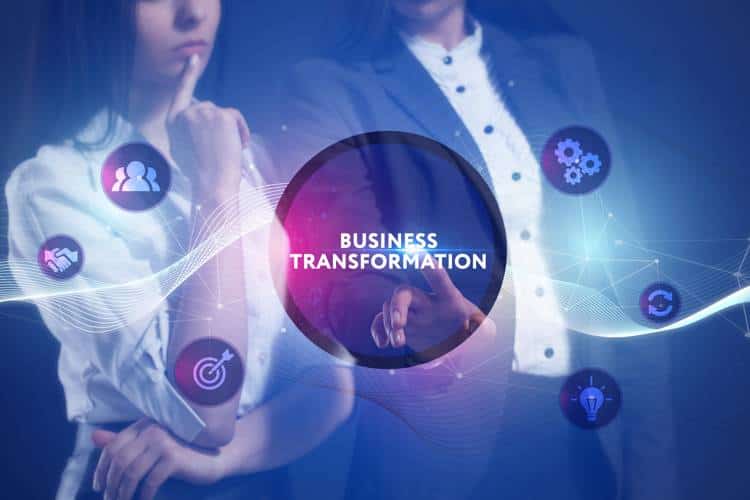-
In the Paper-To-Digital AP Transformation Race, Are You Winning?
The history of accounts payable (AP) automation began in the 1960s, with electronic data interchange (EDI) and continues today with new innovations like machine learning and artificial intelligence poised to continue transforming AP.
Despite constant technological improvements, many companies haven’t kept up with all the innovations. That’s understandable. Technologies change so quickly that it’d be crazy trying to update every time someone creates cool new tech. Plus, there’s a cost to updating to a new technology. And if you’re like me, you want to wait a while after something new comes out to make sure it’s going to keep working well and isn’t just a new fad that’ll go away in a few months.
With AP automation, though, there are clear advantages to updating your company’s processes to use automation software. The technology is established enough to know it’s reliable, but new and innovative enough to grow with your company.

History of AP Automation
In the 1960s, EDI made it possible for computers in multiple companies to communicate, enabling electronic transactions. Optical character recognition (OCR) technology began to emerge as well, though it was used more for things like sorting mail based on ZIP code than business transactions.
The next major change happened in the 1990s with the introduction of enterprise resource planning (ERP) software and increased use of OCR for digitizing documents. By that time, Microsoft Excel was becoming the most widely used software tool for managing spreadsheets. With these changes, AP began a slow migration from an exclusively paper-based process to an increasingly digital process.
In the early 2000s, cloud computing started becoming a viable option and by the 2010s, Software-as-a-Service (SaaS) was born. OCR continued to improve and, coupled with data indexing technology, can now accurately capture paper documents to create editable, searchable digital equivalents. It’s now possible to have a paperless, or nearly paperless, AP department.
Stops on the Road to Automation
When we look at the history of accounts payable’s evolution, where does your company fall? In other words, how much of your process is manual and how much is automated?
The Institute of Financial Management (IOFM) reports that up to 14% of businesses still use manual AP processing. Is your company one of those?
Or maybe your company is one of the many that embraced partial digitization and automation but hasn’t fully automated yet. Maybe you’re using a blend of paper, spreadsheets, and ERP software to run your AP department. Or perhaps you automated years ago with in-house software installed onto company computers, which might now be getting out-of-date and challenging to update.
At the other end of the paper-to-automation spectrum, your company could be using a cloud-based SaaS program to automate accounts payable. You’ll still need people to run the AP department, but the software takes over tasks like data entry and most of the invoice processing. For example, using NextProcess, you can auto-process up to 90% of invoices coming through the AP department.

Moving Toward Automation
If your company hasn’t yet digitized and automated AP processes, cloud-based SaaS programs are an ideal solution. This type of business process automation (BPA) is streamlined, flexible, easy to update, and user-friendly.
Once you get everyone onboard with automation, it’s time to take stock of current AP processes and plan how to finish digitizing them. You might want to keep your workflow very similar to how it is now or take this opportunity to change things that aren’t working so well. Planning before you automate will make implementation go much more smoothly.
With cloud-based BPA software, implementation is very simple for your company. There’s nothing to install on your computers and the software company works with you to customize the software to meet your company’s exact needs. Employees with permission to access the software can log in from any internet-enabled device, improving productivity and standardizing financial processing whether they’re in the office, working from home, or traveling.
BPA software doesn’t replace human employees, but it does make their jobs much easier and shift some of the responsibilities for financial processing. For example, the software takes over routine tasks like data entry, matching POs and invoices, and documenting files for an audit trail. This frees up human employees for tasks like reconciling exceptions, analyzing payables data, and collaborating with other departments.
The NextProcess Difference
If you’re looking for an automation software supplier, we hope you’ll consider NextProcess. Unlike most other software systems, we offer a true end-to-end solution for automating financial processes in your company. Our software modules automate your capital project management, procurement & purchase orders, accounts payable, travel & expense, and payment disbursements. You can choose to use all the modules or just a few. They work together seamlessly and also integrate with ERPs. And for the ERP integration, we handle the software updates needed to keep that integration working smoothly.
NextProcess software is user-friendly and intuitive, especially if you’re already used to working with other cloud-based applications like Google Suite. Once you’re used to using one of our software modules it’s easy to learn to use the others. This is especially useful if you automate the whole procure-to-pay cycle since NextProcess software makes it easy to click between programs. For example, if you’re working with an invoice in the AP software you can open the associated PO in the purchase order software with just a few clicks—no need to navigate to a new program and look for the data manually.
We’ll be happy to answer any questions you have and set up a free software demo. Just contact us today to see first-hand how our software can help your company move forward with accounts payable automation.